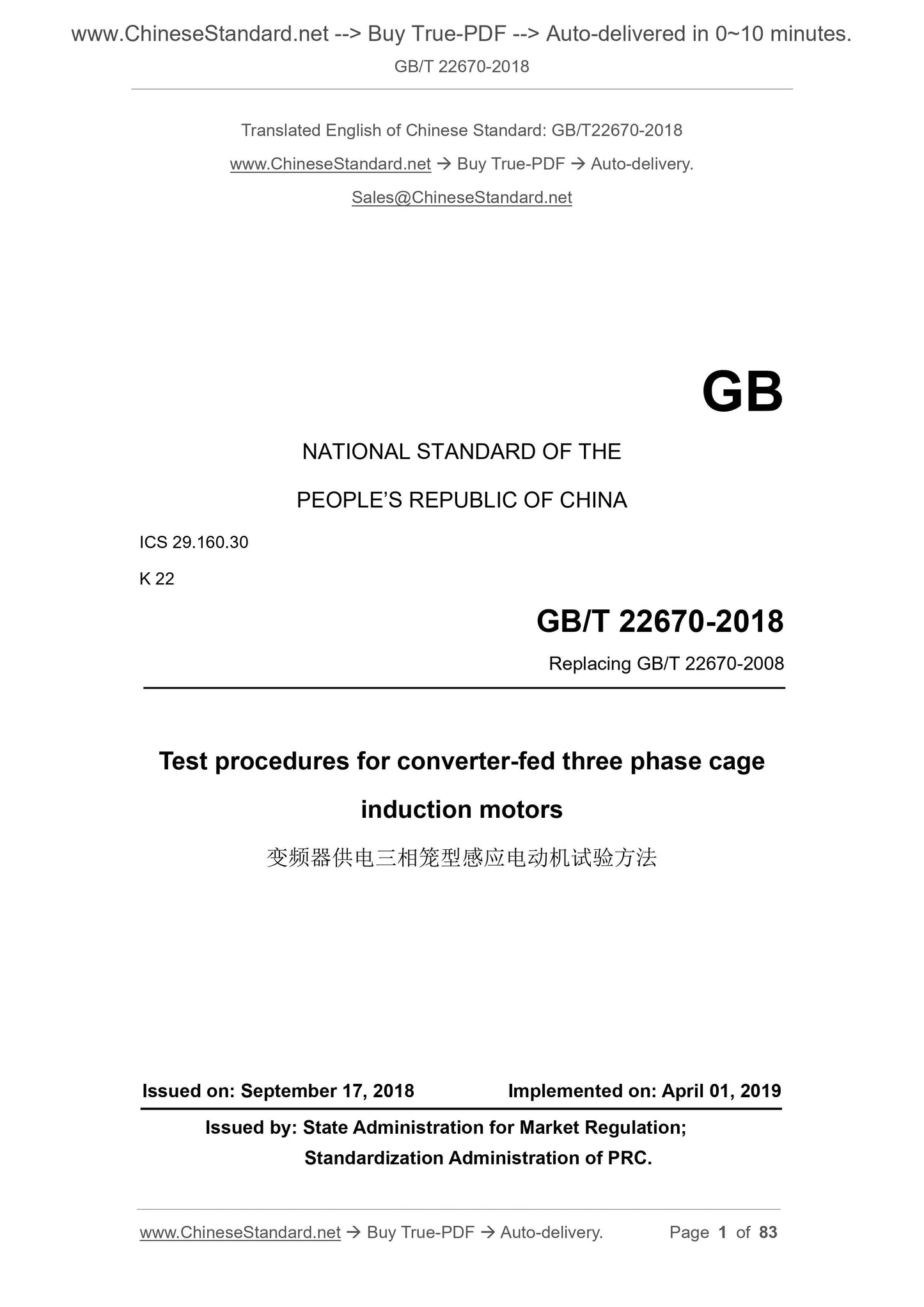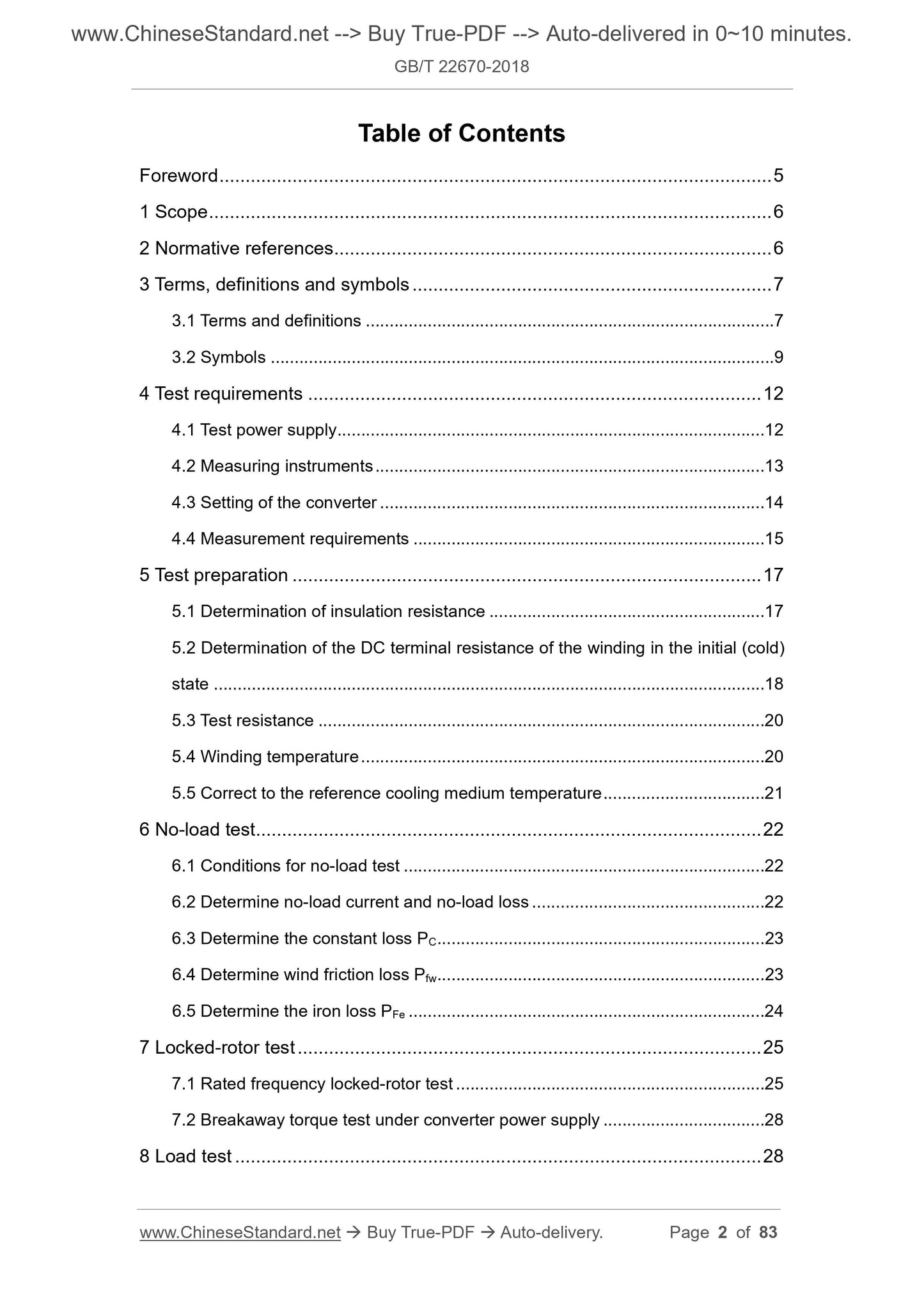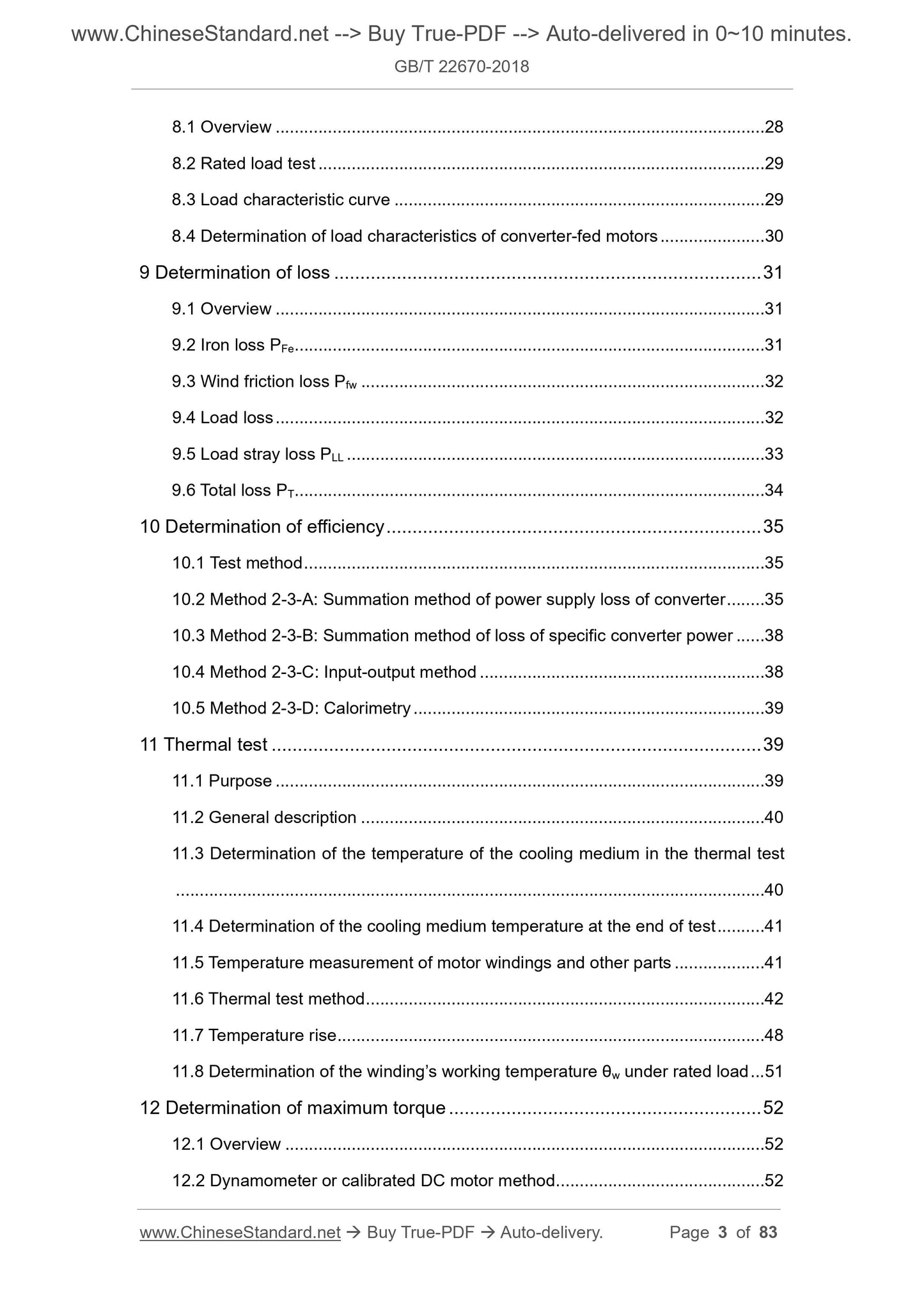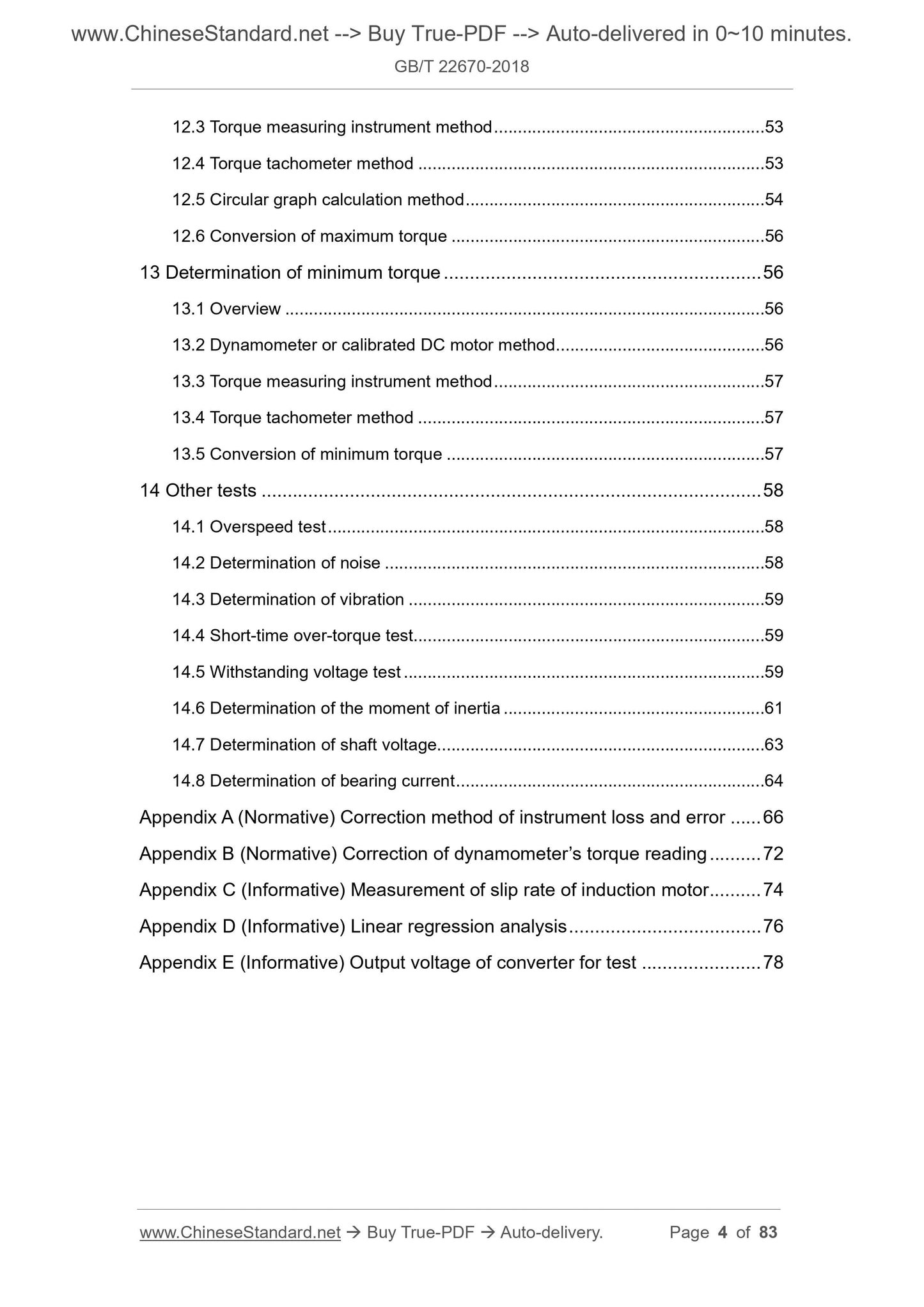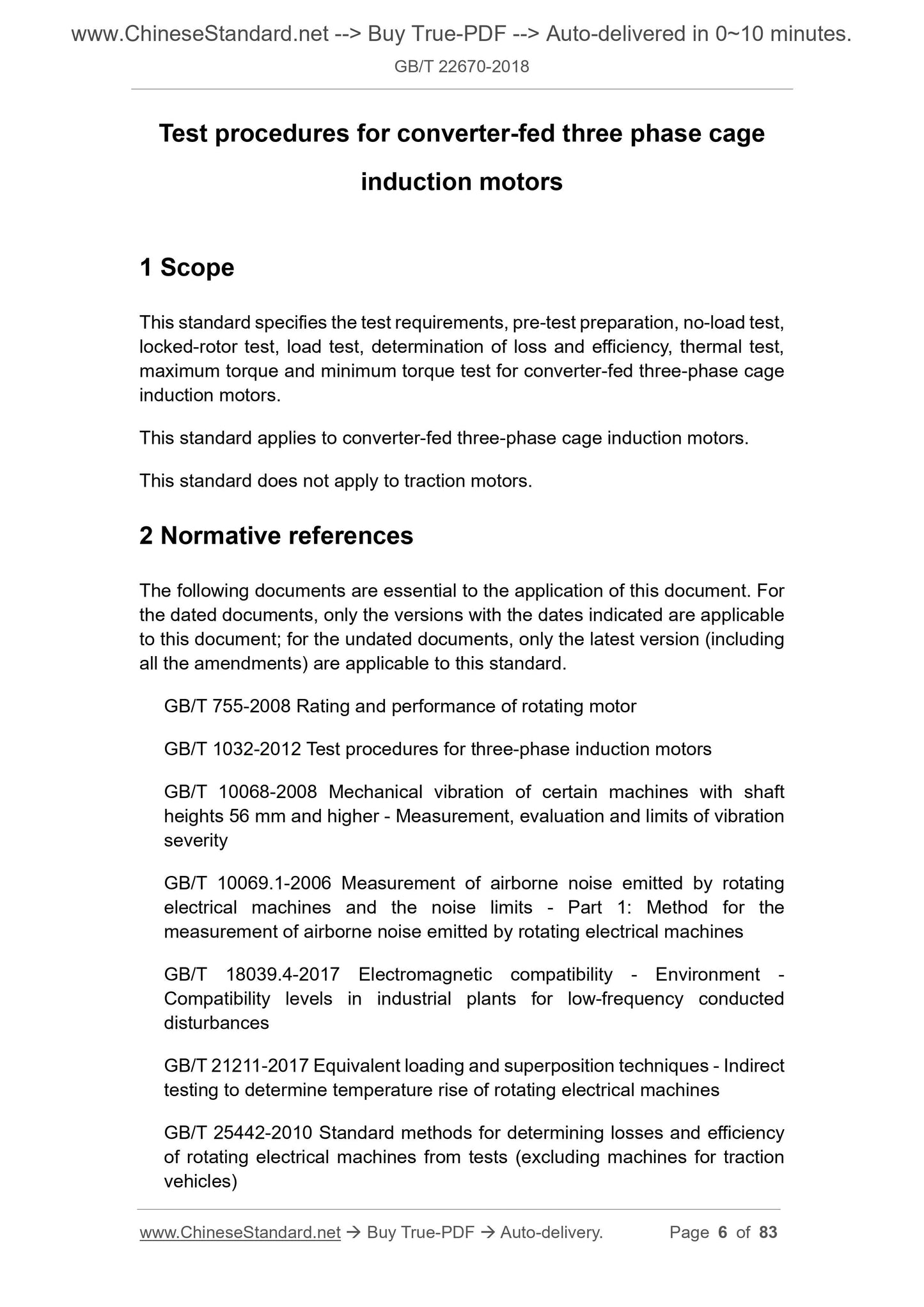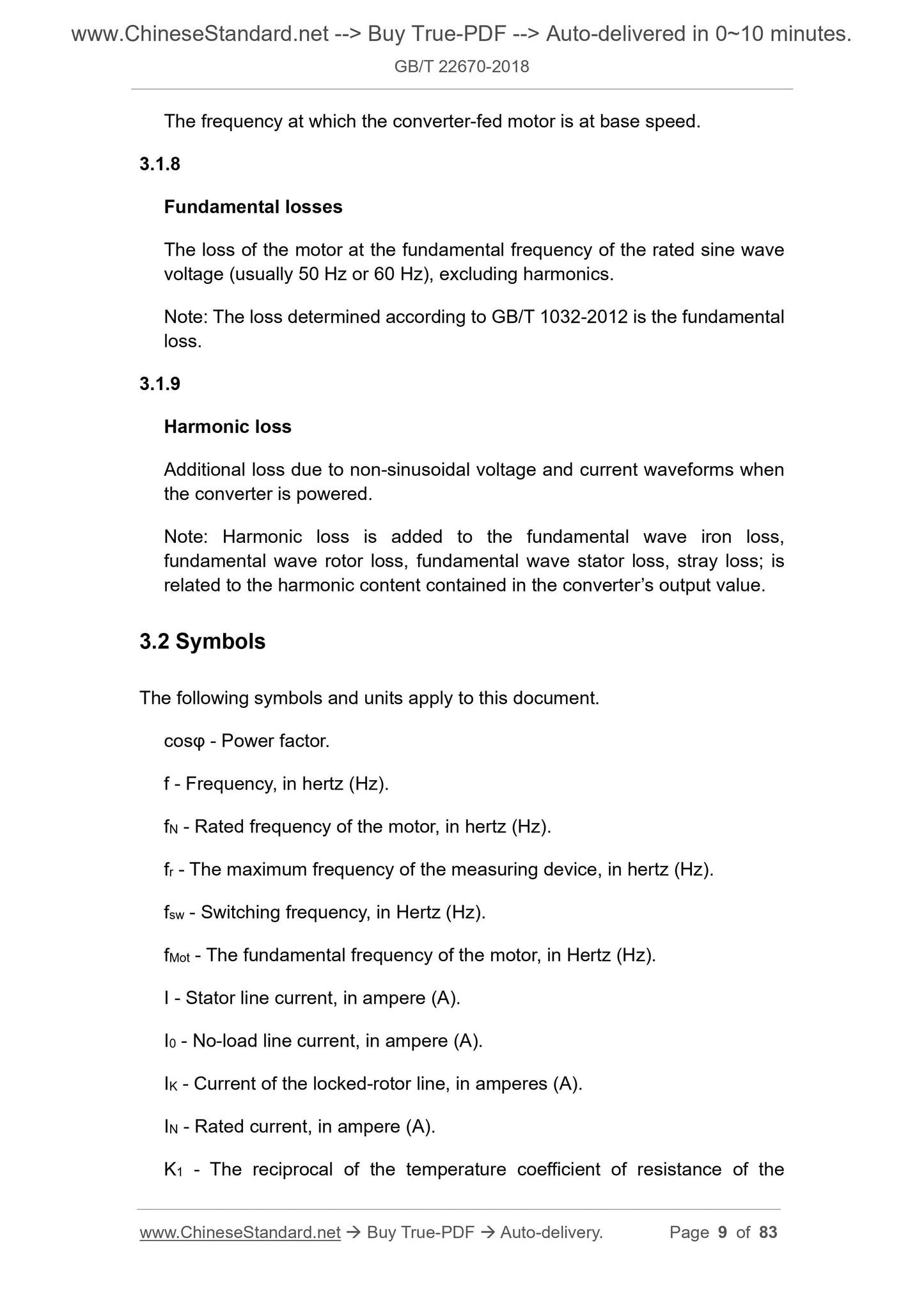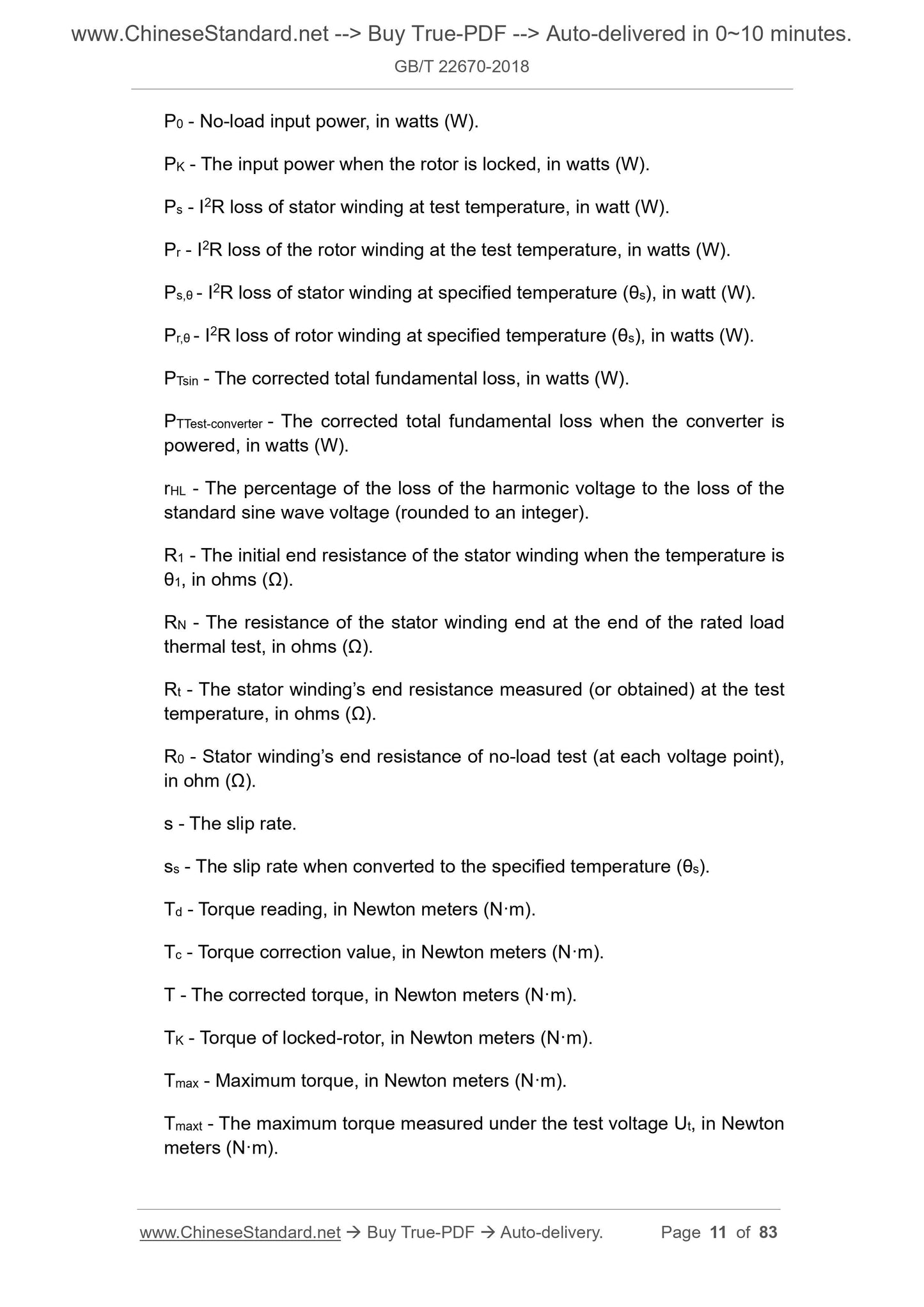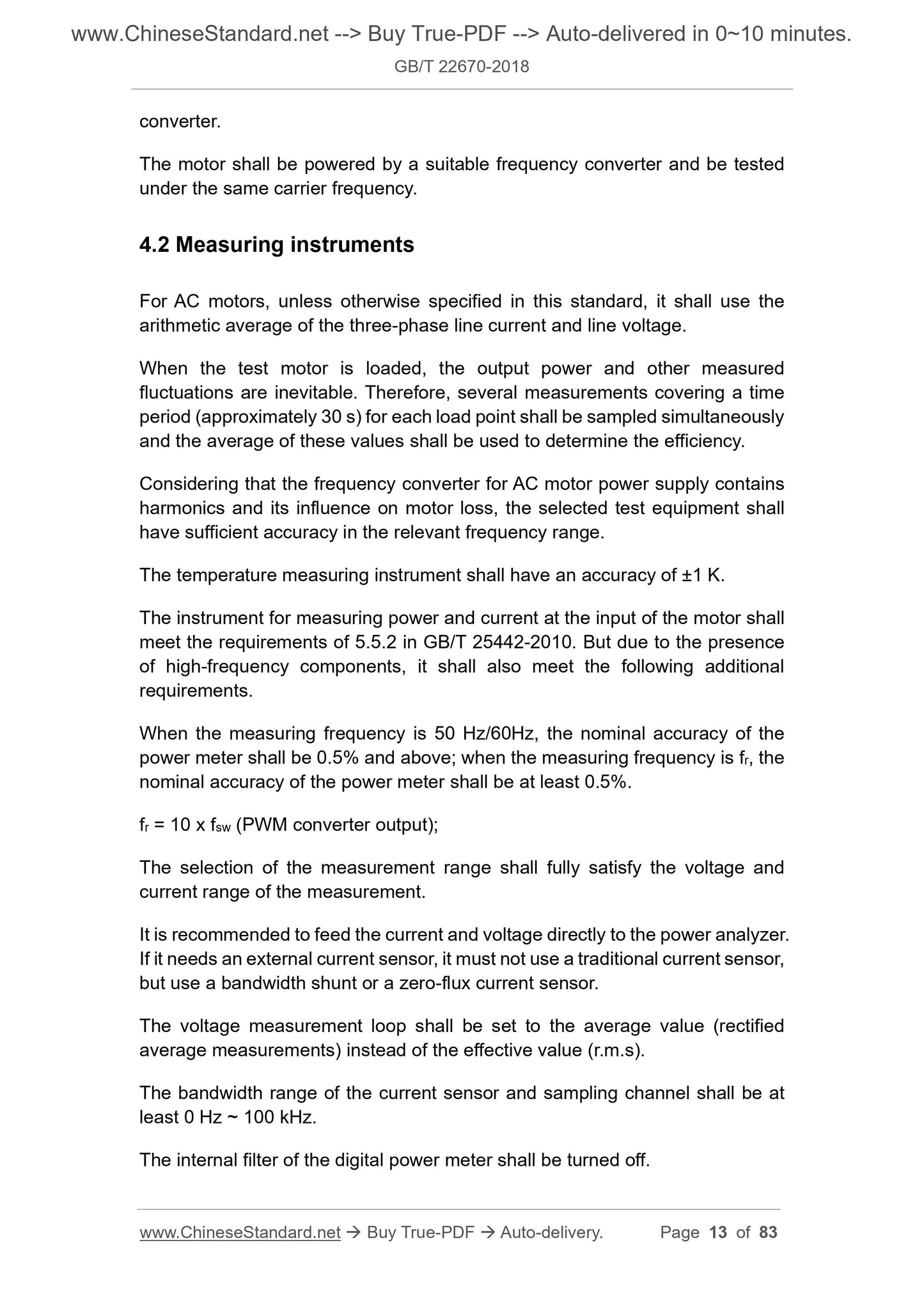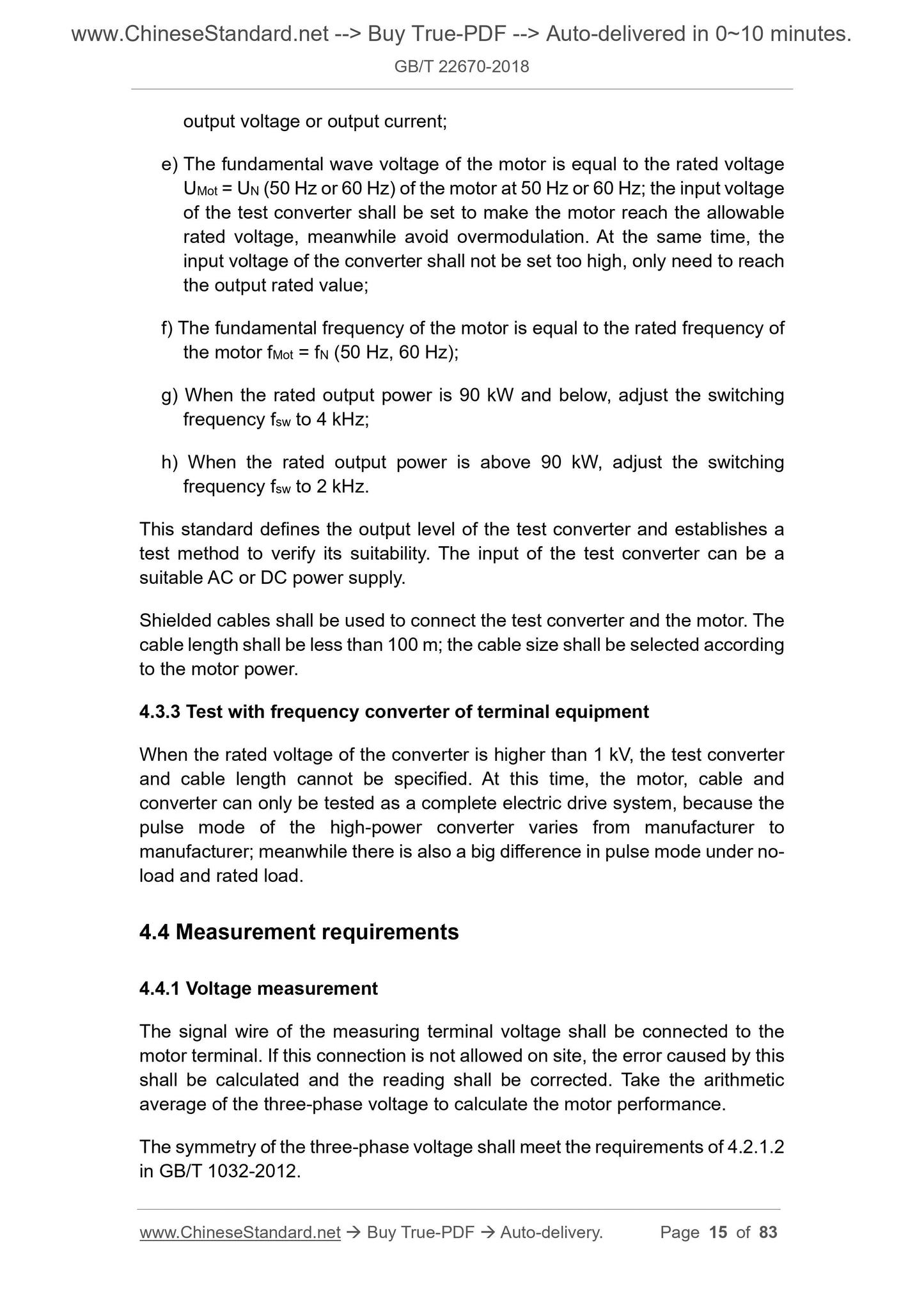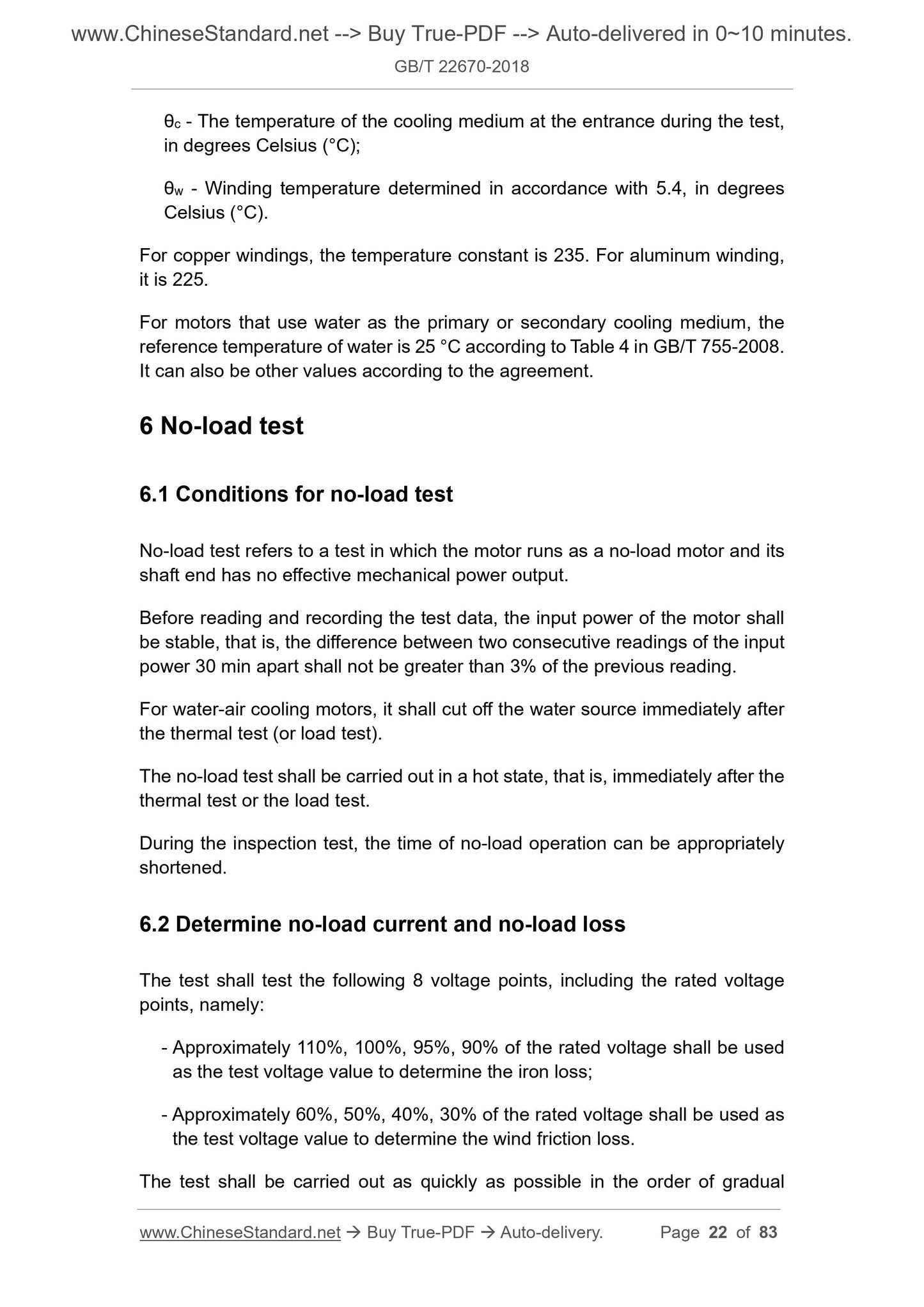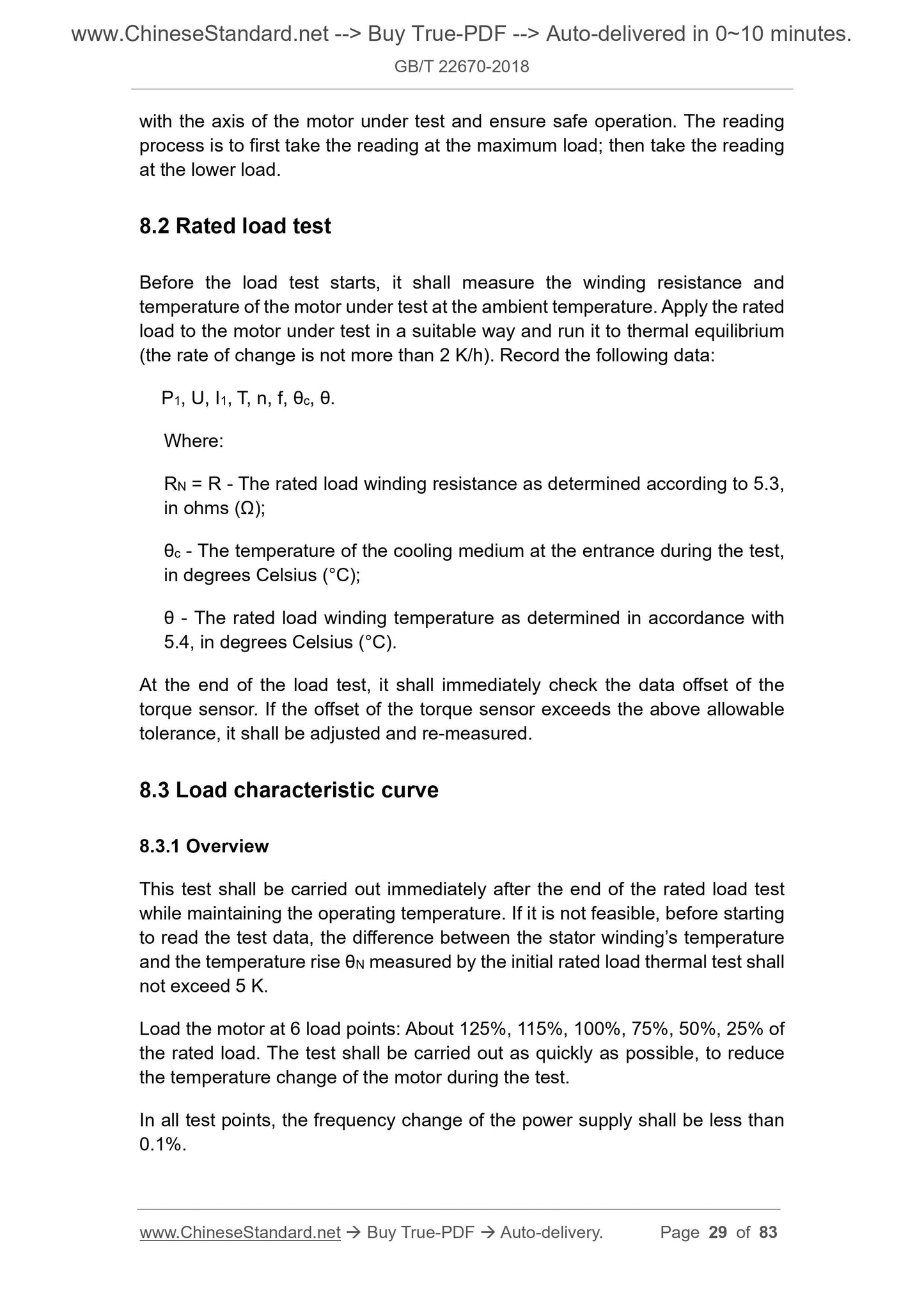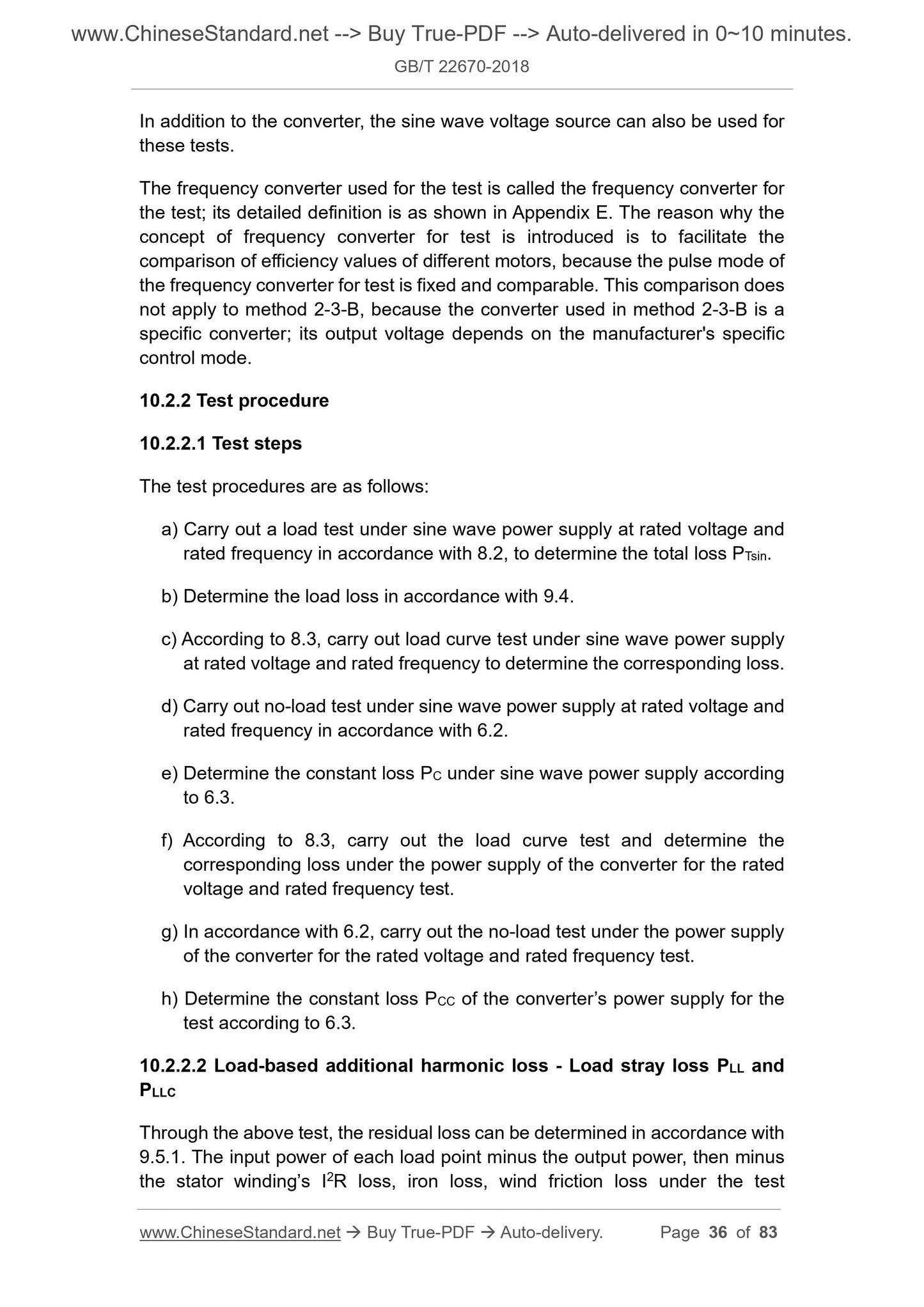1
/
of
12
www.ChineseStandard.us -- Field Test Asia Pte. Ltd.
GB/T 22670-2018 English PDF (GB/T22670-2018)
GB/T 22670-2018 English PDF (GB/T22670-2018)
Regular price
$695.00
Regular price
Sale price
$695.00
Unit price
/
per
Shipping calculated at checkout.
Couldn't load pickup availability
GB/T 22670-2018: Test procedures for converter-fed three phase cage induction motors
Delivery: 9 seconds. Download (and Email) true-PDF + Invoice.Get Quotation: Click GB/T 22670-2018 (Self-service in 1-minute)
Newer / historical versions: GB/T 22670-2018
Preview True-PDF
Scope
This standard specifies the test requirements, pre-test preparation, no-load test,locked-rotor test, load test, determination of loss and efficiency, thermal test,
maximum torque and minimum torque test for converter-fed three-phase cage
induction motors.
This standard applies to converter-fed three-phase cage induction motors.
This standard does not apply to traction motors.
Basic Data
| Standard ID | GB/T 22670-2018 (GB/T22670-2018) |
| Description (Translated English) | Test procedures for converter-fed three phase cage induction motors |
| Sector / Industry | National Standard (Recommended) |
| Classification of Chinese Standard | K22 |
| Classification of International Standard | 29.160.30 |
| Word Count Estimation | 54,515 |
| Date of Issue | 2018-09-17 |
| Date of Implementation | 2019-04-01 |
| Older Standard (superseded by this standard) | GB/T 22670-2008 |
| Regulation (derived from) | National Standard Announcement No. 11 of 2018 |
| Issuing agency(ies) | State Administration for Market Regulation, China National Standardization Administration |
Share
